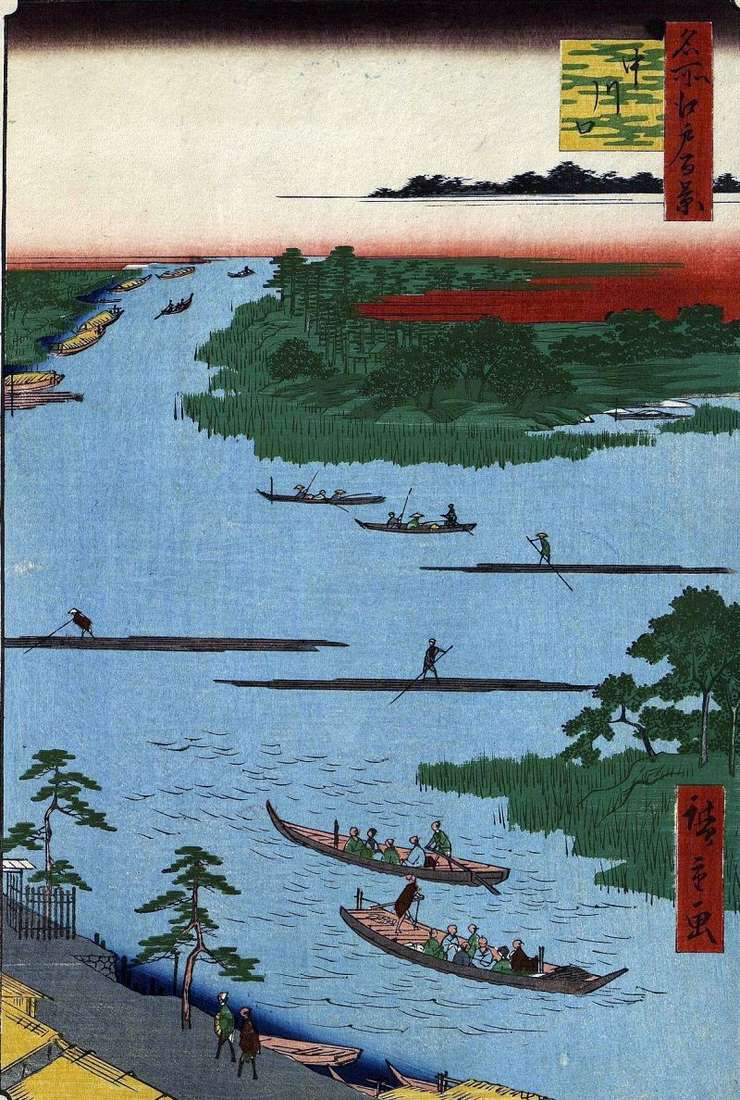
Hiroshige depicts the junction point of the three important Edo transport rivers, it is Nakagawa, Onagigawa and Sinkava. The Nakagawa River, an offshoot of the Tonegawa River, flowed into the Edo Gulf flowing between Sumidagawa and Tongagawa in a southerly direction. Nakagawa was famous for its abundance of fish and was an excellent place for fishing. In the center of the sheet, Hiroshige painted two boats with fishermen. On these rivers were transported salt, products from the northern regions of Japan and areas of the Sea of Japan in Edo.
Perhaps it is the salt that carries the large covered boats on the left side of the sheet, moving along the Sinkawa Canal. The passenger boats are visible on the river, it is the ghetoku-bune, which cruised between the area of Getoku and the city center. They are shown at the bottom of the sheet. In the left corner of the engraving, the construction of the guard post of Nakagawa Gobanse, created to control the importation of weapons and the export of women, is visible. All vessels were subject to mandatory inspection. Hiroshige managed to convey the dynamic life of the river.
The dark blue strip in the later version of the sheet emphasizes the line of the embankment, repeating its smooth bend. The ox, at the confluence of the two rivers, is painted in a darker tone. The pink line of stylized clouds becomes more intense.
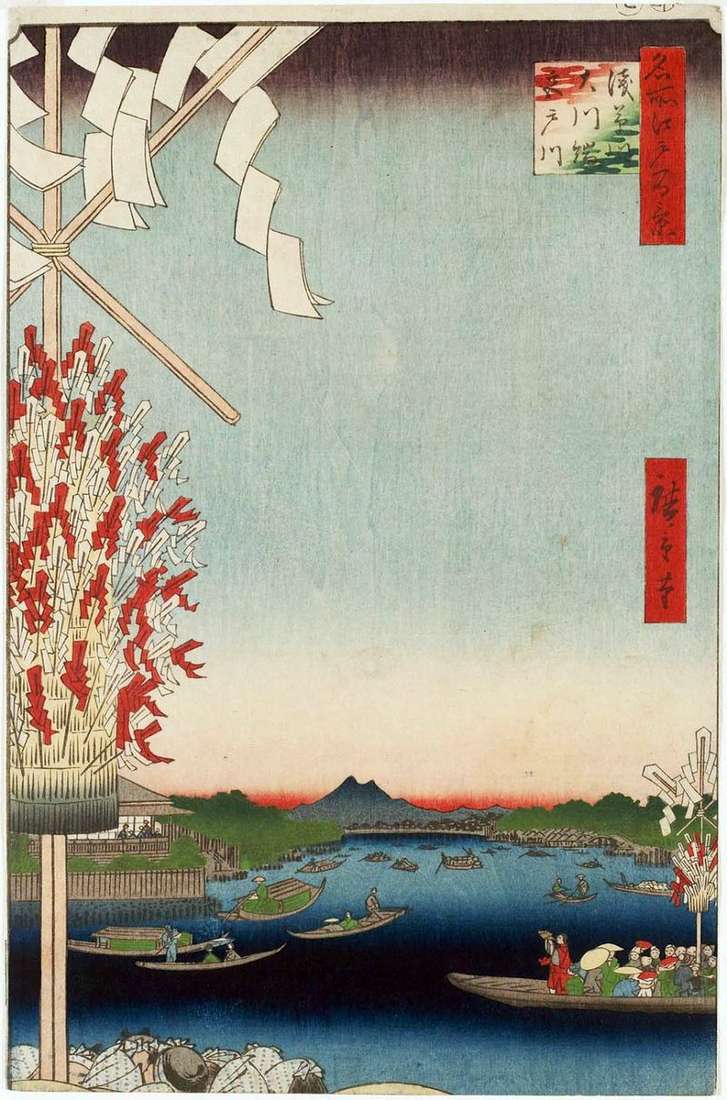 The Asakusagawa River, the Miyatogawa River, the Okavaabata Embankment by Utagawa Hiroshige
The Asakusagawa River, the Miyatogawa River, the Okavaabata Embankment by Utagawa Hiroshige L’embouchure de la rivière Nakagawa – Utagawa Hiroshige
L’embouchure de la rivière Nakagawa – Utagawa Hiroshige La desembocadura del río Nakagawa – Utagawa Hiroshige
La desembocadura del río Nakagawa – Utagawa Hiroshige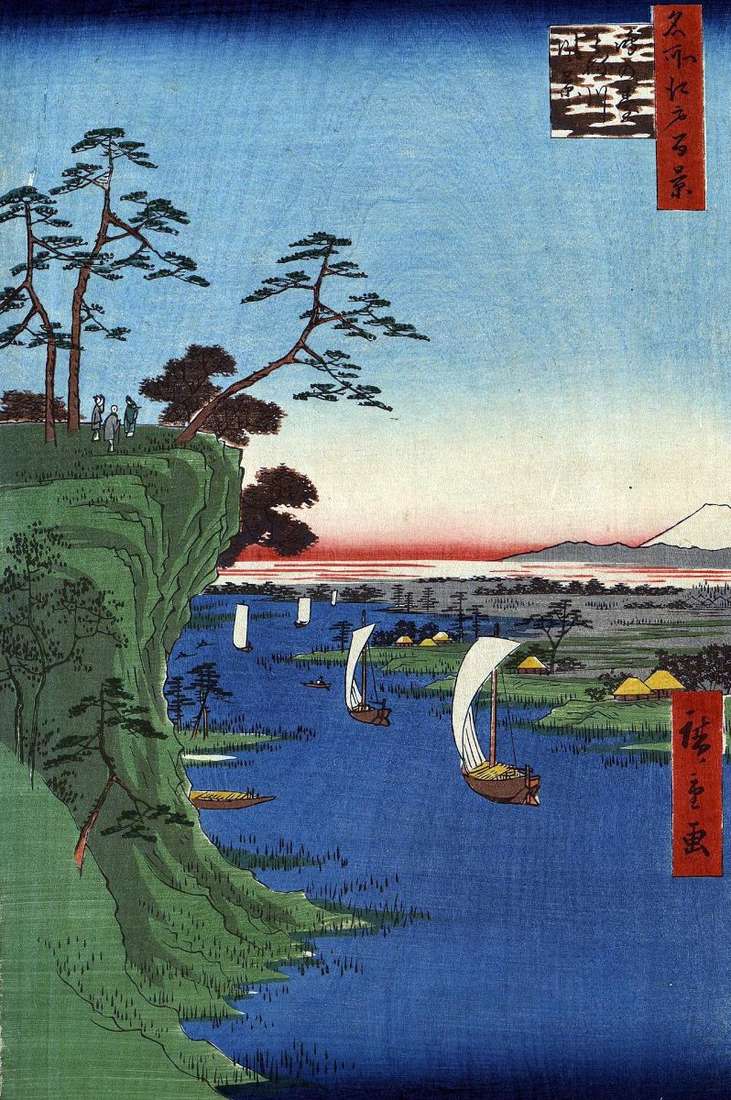 Konodai Hill, Tonegawa River by Utagawa Hiroshige
Konodai Hill, Tonegawa River by Utagawa Hiroshige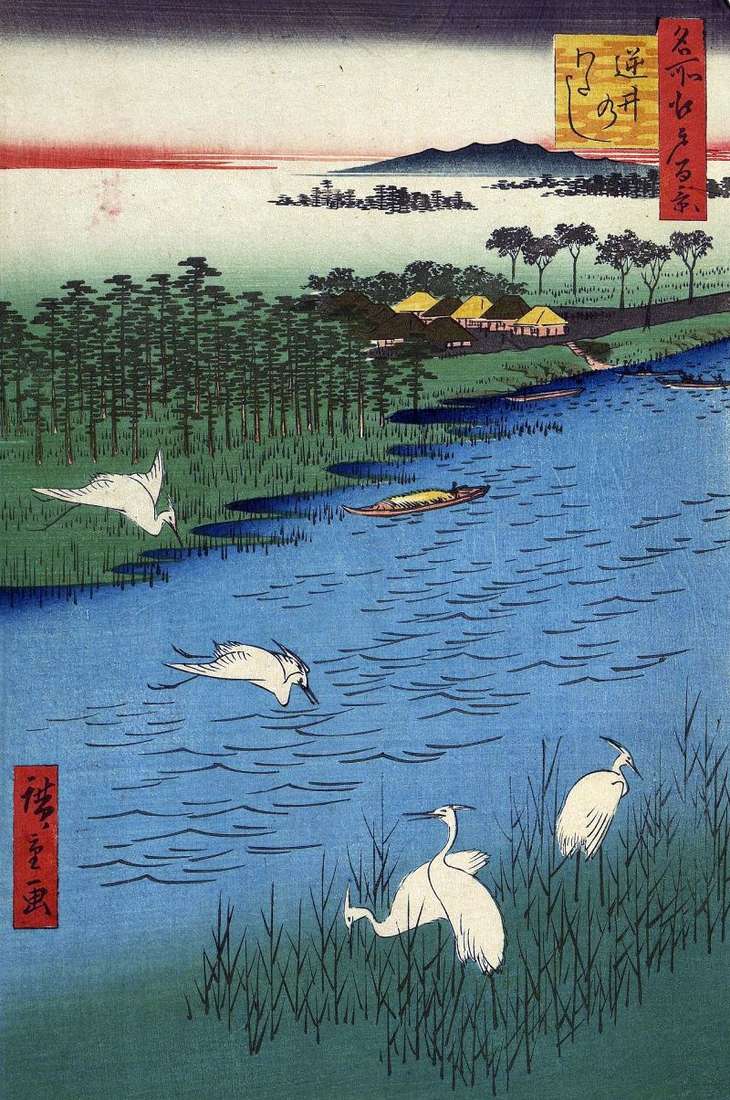 Sakasai crossing by Utagawa Hiroshige
Sakasai crossing by Utagawa Hiroshige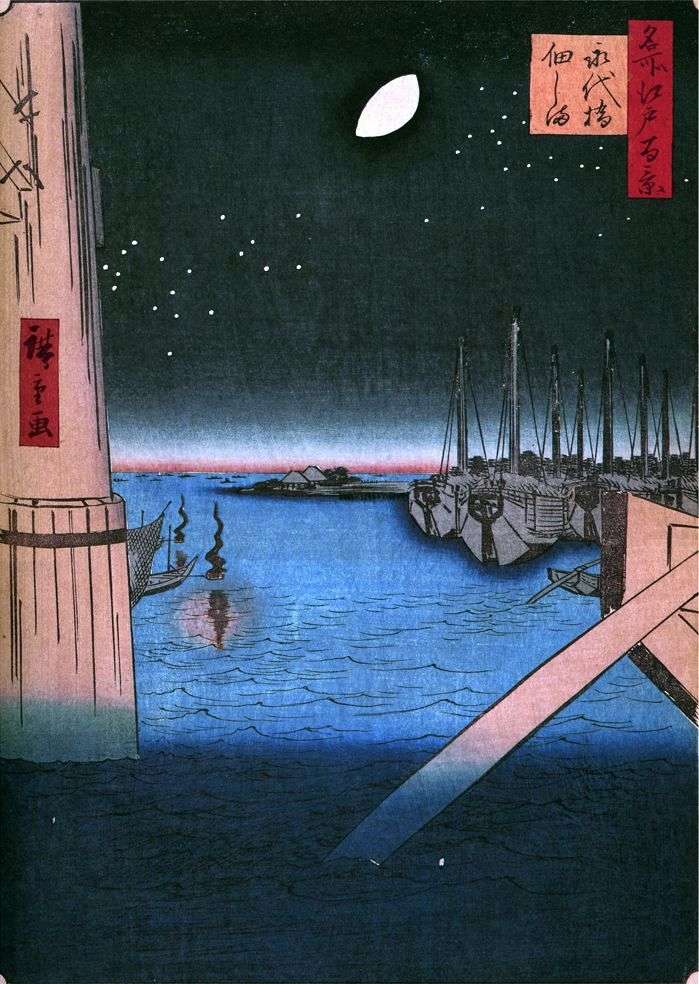 Tsukudajima Island from the Eitaibashi Bridge by Utagawa Hiroshige
Tsukudajima Island from the Eitaibashi Bridge by Utagawa Hiroshige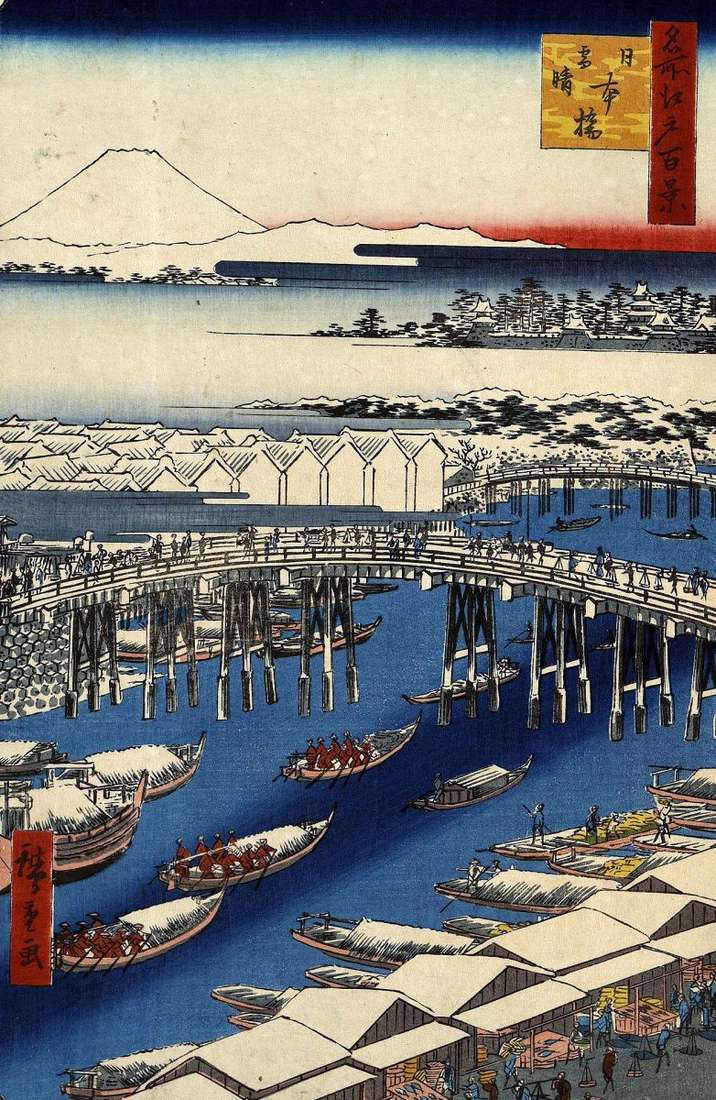 Nihonbashi bridge in clear weather after snowfall by Utagawa Hiroshige
Nihonbashi bridge in clear weather after snowfall by Utagawa Hiroshige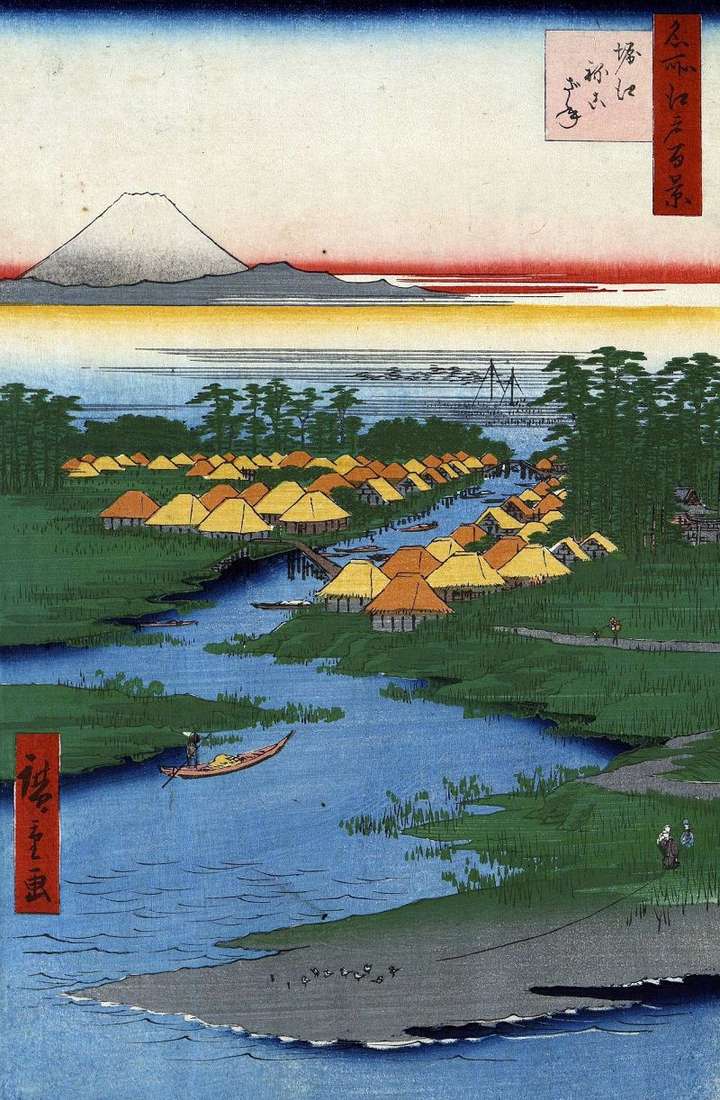 The terrain of Horie and Nekozane by Utagawa Hiroshige
The terrain of Horie and Nekozane by Utagawa Hiroshige